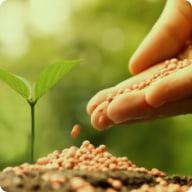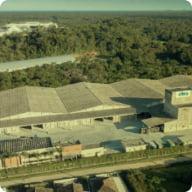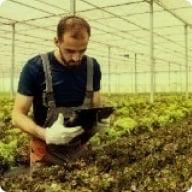Sulfur (S) is considered one of the essential macronutrients for plants.
The functions of S are mainly linked to the formation of amino acids such as cystine, cysteine and methionine and also in the constitution of proteins, such as papain, coenzyme A and glutathione. The absorption of S by plants occurs through mass flow, mostly in the form of sulfate (SO42) and in a small part in the form of thiosulfate (S2O32-). In the soil the element is found from 95% to 98% in the organic form and only from 2% to 5% in the mineral form.
The sulfur deficiency symptoms in plants are very similar to the symptoms of nitrogen deficiency, such as general chlorosis of the leaves, including the veins that change from pale green to yellow. Unlike nitrogen deficiency, the symptoms begin in the younger leaves. In soils where there is a lack of the nutrient, it is possible to observe in some cases plants with a smaller size and thin stems. Deficiency can be expressed by plants for a number of reasons: low natural concentration of sulfur in the soil, low soil organic matter, use of concentrated fertilizers without the presence of sulfur, and more productive cultivars or more intensive systems that extract more sulfur nutrients from the soil.
In the case of soybean, the amount of sulfur extracted to produce 1 ton of grain per hectare is 15.4 kg. From this amount, 35% is collected from the crop. Due to the considerable mobility of the nutrient in the soil and its accumulation in the deeper layers, to diagnose if its needed in the crop, it is necessary to collect samples and do an soil analysis in the layers from 0 to 20 cm and from 20 to 40 cm.
Regarding to the market and to the mineral sources for sulfur fertilization, the most commonly used products are: super simple phosphate (12% of S), ammonium sulfate (24% of S). In addition, it is also possible to apply elemental sulfur (90-99% of S), but oxidation must occur for the nutrient to become available to plants. A biological process that depends on several factors, such as temperature, moisture and aeration, soil texture and organic matter, pH and the specific surface of the source.
Cibra, in addition to super simple phosphate and ammonium sulfate, has straight fertilizers and blends that are capable to offer a quality sulfur to the soil and a balanced deliver to the plants. BaseFort is a product that contains N, P and S in a single granule. Cibra is also developing POLY4, fertilizer which contains in only one granule K, Ca, Mg and S based on sulfate. It will be a new alternative to manage and nurture the plants from several crops in several Brazilian states.
References
BORKERT, Clóvis Manuel et al. Seja o doutor da sua soja. 5. ed. Cascavel: Potafos, 1994. 17 p. Disponível em: https://www.npct.com.br/npctweb/npct.nsf/article/BRS-3140/$File/Seja%20Soja.pdf. Acesso em: 06 dez. 2021.
HOROWITZ, N. Oxidação e eficiência agronômica do enxofre elementar em solos do Brasil. 2003. 109 p. Tese (Doutorado, Programa de Pós Graduação em Ciência do Solo) – Faculdade de Agronomia, Universidade Federal do Rio Grande do Sul, Porto Alegre, 2003.
TECNOLOGIAS de produção de soja – região central do Brasil 2009 e 2010. Londrina: Embrapa Soja, 2008. 261 p. (Embrapa Soja. Sistemas de Produção, 13).















